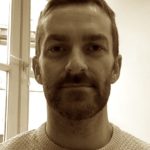Link to Pubmed [PMID] – 22781162
Link to DOI – 10.1016/j.neuroimage.2012.06.061
Neuroimage 2012 Oct; 63(1): 11-24
Brain imaging is increasingly recognised as an intermediate phenotype to understand the complex path between genetics and behavioural or clinical phenotypes. In this context, a first goal is to propose methods to identify the part of genetic variability that explains some neuroimaging variability. Classical univariate approaches often ignore the potential joint effects that may exist between genes or the potential covariations between brain regions. In this paper, we propose instead to investigate an exploratory multivariate method in order to identify a set of Single Nucleotide Polymorphisms (SNPs) covarying with a set of neuroimaging phenotypes derived from functional Magnetic Resonance Imaging (fMRI). Recently, Partial Least Squares (PLS) regression or Canonical Correlation Analysis (CCA) have been proposed to analyse DNA and transcriptomics. Here, we propose to transpose this idea to the DNA vs. imaging context. However, in very high-dimensional settings like in imaging genetics studies, such multivariate methods may encounter overfitting issues. Thus we investigate the use of different strategies of regularisation and dimension reduction techniques combined with PLS or CCA to face the very high dimensionality of imaging genetics studies. We propose a comparison study of the different strategies on a simulated dataset first and then on a real dataset composed of 94 subjects, around 600,000 SNPs and 34 functional MRI lateralisation indexes computed from reading and speech comprehension contrast maps. We estimate the generalisability of the multivariate association with a cross-validation scheme and demonstrate the significance of this link, using a permutation procedure. Univariate selection appears to be necessary to reduce the dimensionality. However, the significant association uncovered by this two-step approach combining univariate filtering and L1-regularised PLS suggests that discovering meaningful genetic associations calls for a multivariate approach.

